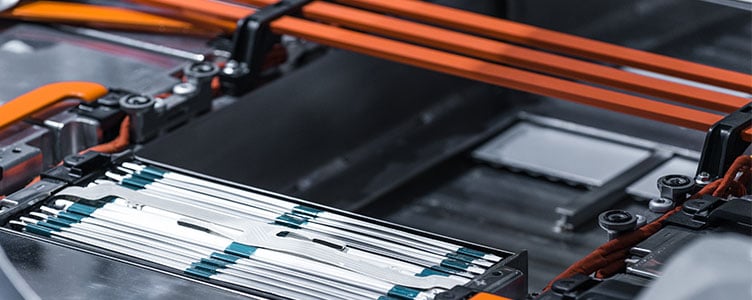
Compression pads for batteries – why are they useful?
As the electric vehicle (EV) market gains momentum, and we creep ever closer to the 2030 deadline for an end to the sale of fossil fuel vehicles in the UK, innovation in the field of EV batteries is happening at a rapid pace.
Even closer deadlines include 2025 for Norway, meaning manufacturers must work to increase the storage capacity and life cycle of battery packs whilst balancing performance, cost and safety.
In this article, we’re going to examine why compression pads for electric vehicle batteries are useful in ensuring optimal performance, extending the life of the battery pack and increasing the safety of the vehicle occupants.
Lithium-ion batteries in electric vehicles
Lithium-ion (LI-ion) batteries are the most common type of battery used in electric vehicles because of the balance of safety, lifespan and performance with relatively low cost. They also have a high power to weight ratio, meaning that the vehicle is able to store more energy and therefore travel longer distances without recharging, all while avoiding sacrificing on performance.
That being said, EV battery technology in terms of storage capability hasn’t yet caught up to that of internal combustion engine (ICE) vehicles . It’s estimated that the energy storage capability of a battery will need to double and even quadruple before it can go completely head-to-head with an ICE vehicle. This means that an EV will need to be recharged more often than it would need to be refueled with the same usage. Over the course of its useful life, each recharge of the battery reduces the overall capacitance, and can also cause changes in the battery’s internal chemistry, leading to physical changes.
Similarly, extreme changes in temperature – whether hot, or cold, can cause the battery to contract and expand. If left unchecked, and without suitable compression, this contraction and expansion can lead to deformation of the battery pack, which could significantly reduce the useful life of the battery and even pose a safety risk if the deformation is significant enough.
Compression pads for EV batteries
Compression pads for batteries are useful in allowing enough pressure to be applied to the pack to maintain thermal and electrical connections, whilst letting the pack “breathe” – allowing for tolerance and some expansion when the battery is charged, or exposed to extreme temperatures.
Research suggests that mechanical compression on a LI-ion battery can increase the life cycle of the battery. This particular study found that optimum ageing behaviour was found for cells under low or medium pressure – around 0.08Mpa to 0.4Mpa.
In addition, a compression pad which includes a layer of thermally resistant, non-combustible material can also provide vital protection for the vehicle occupant. As we’ve covered many times before, it’s absolutely vital that lithium-ion battery packs within electric vehicles have effective insulation. LI-ion batteries, as they are high density, are particularly prone to thermal runaway – a process in which a rise in temperature in the battery cell or pack causes an unstoppable chain reaction – and in an EV where you have a large pack, the risk is significant.
Compression Pad Plus
Compression Pad Plus is an optimal compression pad solution for electric vehicle battery packs designed by Elmelin. Utilising mica and biosoluble paper rather than the more commonly used polyurethane foam, Compression Pad Plus offers superior dielectric strength and thermal resistance as well as being non-hazardous.
If you’d like to find out more about Compression Pad Plus or any of our other mica-based insulation solutions for automotive, get in touch.
